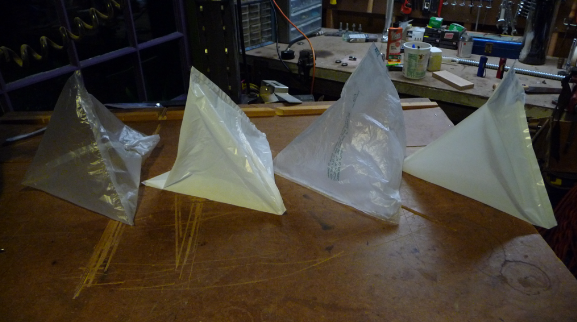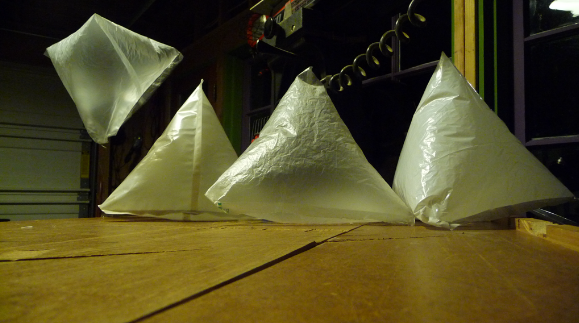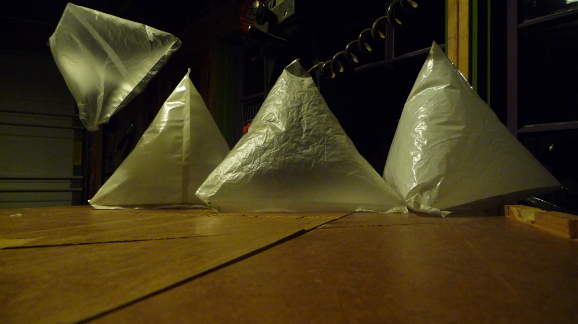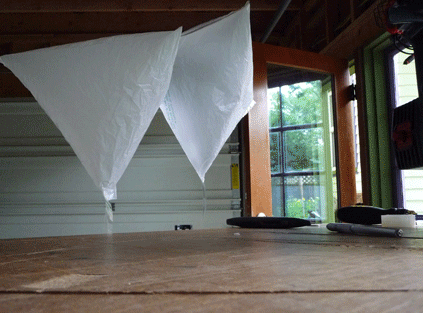Helium Dispersion Through HDPE
In conversations on the Grassroots Mapping google group we’ve been wondering how long a homemade Polyethylene helium balloon could stay aloft. At what rate would a balloon lose it’s helium? This is a crucial question, since** tomorrow we’ll be building a bunch of balloons**. So last night I ran helium dispersion tests through HDPE with four different types of sheeting sitting around my house and a borrowed electronic balance.
Conclusions
The four thicknesses I could find were .315 mil (millionths of an inch) .69 mil, 1 mil, and 3 mil. Two complications to the tests were that the .69 mil was white, meaning it had added pigment, and the balance was only accurate to 1 gram, so I wasn’t able to figure out the rate of loss. I took photos of the balloons every 20 minutes from 10pm to 12pm, and then measured them this morning at 8AM. I then re-filled the .69 mil and 1 mil balloons for a second round of testing, realizing I’d incorrectly filled them the night before.
The conclusion i could draw was that .315 mil loses 1/4 to 1/3 of it’s helium over two hours, which means it probably is a poor choice for helium balloons. Each balloon had around 3 grams of lift.
The unfilled the white .69 mil balloon weighed about 3g. Full, it barely registered on the balance, and this morning the balance still oscillated between 0 and 1g. The 1 mil balloon, which weighed 2g unfilled and registered 1g filled, weighed 2g this morning, with no appreciable loss of gas. I should have noticed immediately that I’d screwed up, but I was distracted and cleaning the kitchen while running the tests. I must have filled the 1 mil and .69 mil balloons with a mixture of air and helium. This is confirmed by re-filling them this morning and watching them float.
So I ran the test again, filling both balloons up. The overnight test, although botched, was confirmed this morning. Over two hours, you can see the 1 mil clear balloon lose lift, while the white balloon remains buoyant.
Why would thicker, clear HDPE lose helium faster than white .69 HDPE? I believe it is the inclusion of metal oxide to tint the white plastic. White pigment is either zinc oxide or titanium dioxide (or lead oxide in really old stuff). This would also explain why the white HDPE is heavier than the thicker clear stuff.



